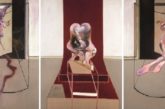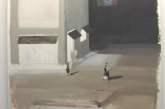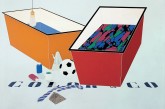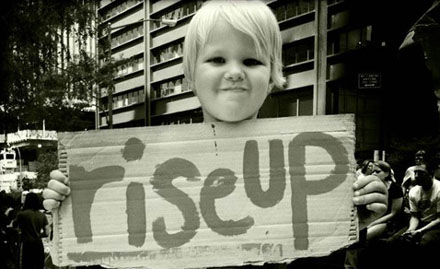
This text is the result of a reflection prepared to the event Piazza McLuhan that took place during the DEW Line Festival in Toronto 2011. This Festivalwas part of the Conference McLuhan 100, Then, Now, Next one of the multiple celebrations of McLuhan’s centenary during this year[1].
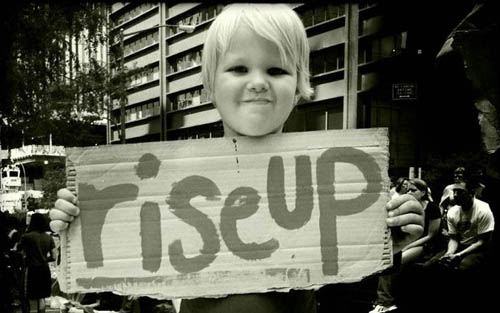
The aim of Piazza McLuhan proposal was triple. Firstly, it aimed to offer a personal perspective of the year 1964, the publication year of the book Understanding Media; secondly, to displace attention to the actual crisis situation and, thirdly, to imagine the future. So, the aim of this short text is to offer my personal perspective of the year 1964 together with a light reflection about what constituted the book’s “environment” during that time and then to focus on the present as a tool tospot traces of the future embedded in the present.
In order to perform this time travel I will use the concepts of figure and ground in McLuhan to analyse the interplay of changes in the environment from 1964 to now and project them into the future.
The year 1964 is an essential turning point not only to my lifebut also in the life of my birth country, Brazil. It was the year of the coupe d’état that brought the end of democracy and the public Piazza to Brazilians. From a broad perspective this historical fact was inscribed in a full panorama in which the main elements were:
-The polarization of the period dominated by the Cold War with the division of the world in two sides;
-The presence of the Iron Curtain, Warsaw Pact Nations, NATO Nations and European Buffer Zone;
– A Globalization developed according to a polarized division of the world;
– Many dictatorships linked to one of the two sides- aligned to one of the two pole figures covered almost the whole planet.
In 1964 a military led Coup d’etát overthrew JoãoGoulard, a democratically elected president of the Labour Party. His proposals of land reform and more presence of state control in economy were seen as communist. This fact turned Brazil from figure into ground, a dark period that lasted for 20 years.
With this situation came a new “Constitution” that restricted freedom of speech and political opposition. My father was prohibited to teach History of Brazil.
The new regimen was based on nationalism, economic development (the so-called Brazilian Economical Miracle) and opposition to Communism.
Media, body and mind control
Supported by the broadcast style of communication (from one to many), media control was established. Television and radio contents were under extreme surveillance. Official propaganda found on television and radio easy channels to convey contents. Art censorship, in special cinema and music,obliged artists such as Caetano Veloso, Chico Buarque de Hollanda, among others, to leave the country.
At the education level, curricula, schools and universities were the first places to be caught under the regime’s paws: production, reproduction and distribution of free and creative critical thinking were done under strict control. Information agents disguised as students frequented classes to get access to the contents offered in the university spaces of the classroom.The omnipotent shadows of information agencies such as SNI (National Information Service) and DOPS (Department of Social and Political Order)invaded andhunted minds and hearts, public and private spaces.
The imposition of silence in public spaces brought the end of the Public Piazza and the fear of the concept of PUBLIC space.
Starts to change from ground to figure
Change started in the early 1980s in a framework of strong economical problems such as inflation, impoverishment of medium classes, enormous rent unbalance and with the support of social movements that culminated with the presidential elections in 1984 and the full return to democracy in which Brazil is now.
Nowadays polar-based Globalization is turning into Globalization understood as a general multi-centred process that can be read asdominance of ground over figure. Specially, in the World crisis there is a global emergence of what previously was in the ground. Jim O’Neil, a global economist at Goldman Sachs, offered the BRIC thesis according to which Brazil, Russia, India, China will lead the world in this new order that is emerging. If the BRIC thesis is true these four countriesare turning from ground into figure now.
Apart from that many dictatorships of different political shades that still cover the planet are also turning from ground into figure supported by social media. With the spread of social media-supported social movements, such as Occupy Wall Street and Arab Spring, the global map is reflecting the retrieval of liberty. According to some theories these movements could suppose a bottom-up rejection of the representative regimen in itself. We can consider that these are the featuresof a context in which what used to be previouslyunderstood as ground can now emerge into figure.
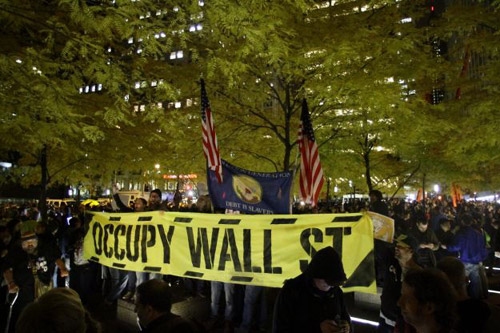
Finding in thepresenttheroots of thefuture
Greece, the cradle of Western civilization is in deep crisis, and its situation is threatening the already fragile context of other European countries. I would like to propose a final question to finish this writing. Could we think that the Greek crisis is a symbol of the fragility of the basis of the very Western Civilization and the announcement of a new order which patterns are still difficult to recognize but that certainly will turn into figure what now is in the ground and provoke a qualitative jump in the paradigm of Western civilization as we understand it today?
I would like to propose we started to think together about which ground is turning into figure now. Only by deeply knowing the present we can really imagine the future.
Cristina Miranda De Almeida
D’ARS year 51/nr 208/winter 2011
[1] McLuhan Piazza was an event co-promoted in collaboration with the Italian Cultural Institute in Toronto as part of the DewLine Festival. The event took place during the McLuhan100:Then, Now, Next Conference. The main theme of the event McLuhan Piazza was to focus on the year 1964 –the year of publication of Understanding Media by McLuhan- as a starting point of a travel across time and trigger new insights. I would like to thank the organisers (Elena Lamberti, University of Bologna, PeppinoOrtoleva, UniversitàdegliStudi di Torino, and Paolo Granata) for this extraordinary event and, in special I express my thankfulness to Professor Elena Lamberti for this invitation. For more information visit the IIC website:http://www.iictoronto.esteri.it/IIC_Toronto/webform/SchedaEvento.aspx?id=612&citta=Toronto


